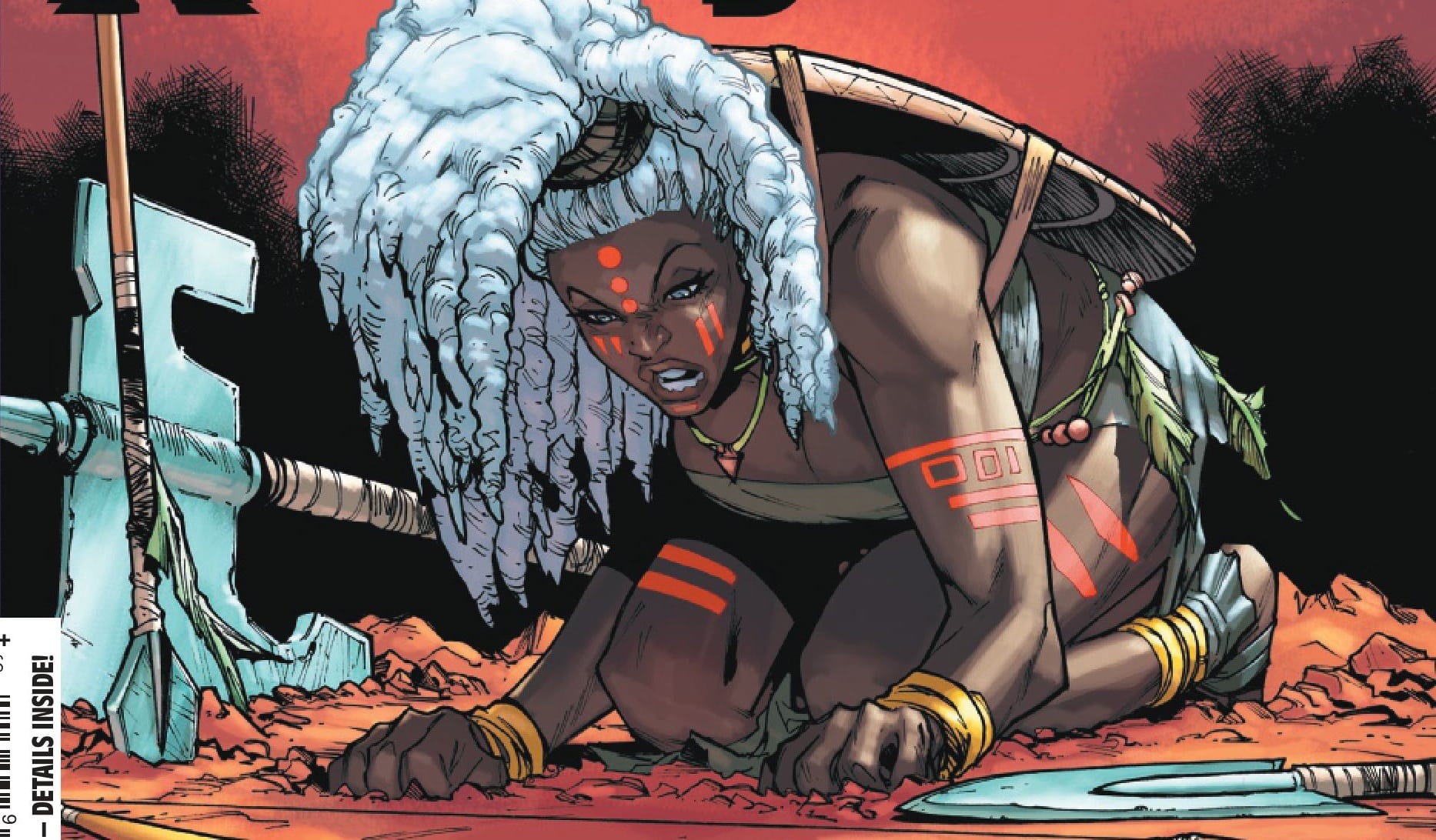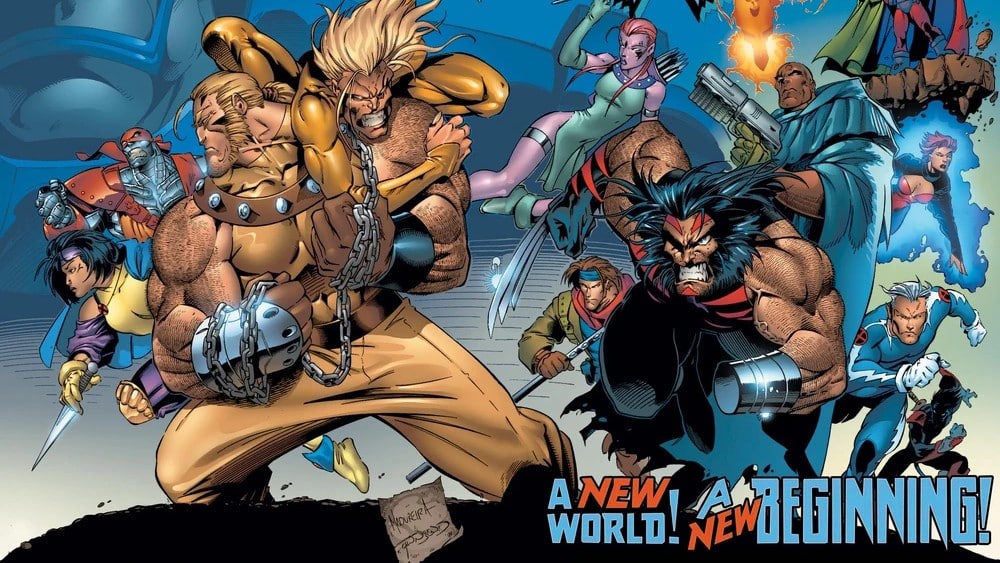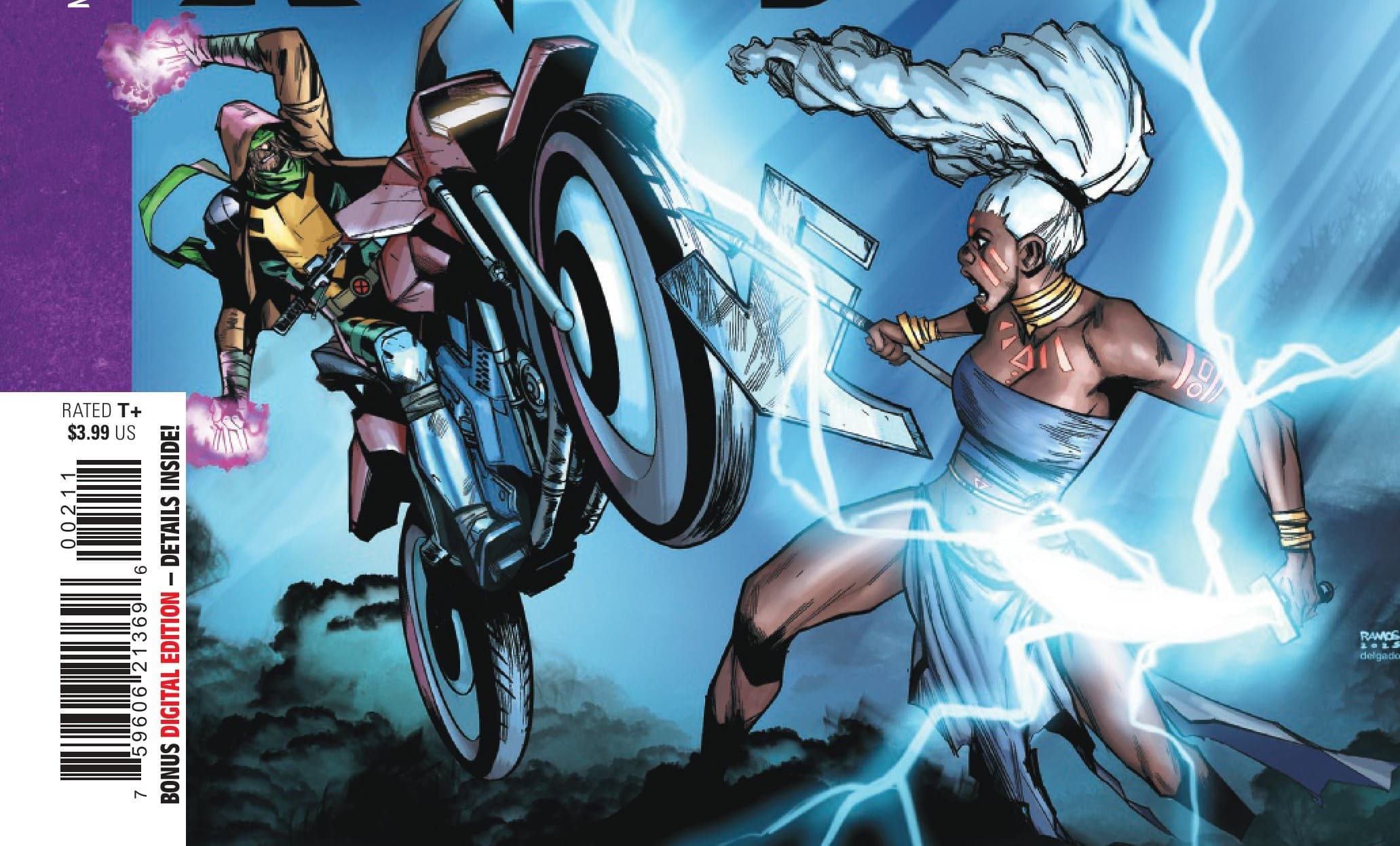At long last, we enter…the Vault in X-Men #18 written by Jonathan Hickman, art by Mahmud Asrar, colors by Sunny Gho, and letters by Clayton Cowles.
Chris Eddleman: Well, it seems like it’s been awhile since we’ve talked but, frankly I don’t think we missed anything of value. Anyhow, it’s time to check in with our friends! You know, the friends from high school that we swear we’ll keep touch with but fall off quickly, more quickly than we ever thought possible, Rob.
I mean, our friends who ventured into the Vault. You remember of course, last January? When Cyclops sent Wolverine [Ed. note: Laura, the best one], Synch, and Darwin into the Vault to do recon on the transhumanist collective called the Children of the Vault? So long ago, Rob. An age ago. An entire eon has passed since then. For them, I mean. Not for us, that would be silly.
Robert Secundus: Yeah, it’s not like for, oh, the past year we’ve been stuck inside in a situation where time moves from treacling slow to torrentially fast. That would be absurd.
Survival of the Fittest

CE: Okay, I’m goofing on this topic. But I wanted to talk a little bit about the nature of survival in the context of this issue. But I need to digress a bit first. I tend to think of survival on a micro level and a macro level, and this is due to a little bit about my past. See, back in my teenage years, I was a Boy Scout (an organization I have come to distrust) and part of that experience involved earning my Wilderness Survival badge. Does this mean I’m some kind of survival expert? Absolutely not. That was maybe a week at camp led by a bored older teenager. But there were some valuable lessons there. Find a stream, walk downstream, you’ll eventually find a town. What materials make for a fairly waterproof shelter. Anyway, this culminated in a night where we had to survive using just things out of our pack. Now granted, there wasn’t a lot to “survive” on a rainfree night in July in upstate New York but, you know. This was an acute incident, for me, of survival. This was water, shelter, food. Survival on the micro level. One being, just trying to live for another day.
Now, this is contrasted with another area of probably more expertise for me. Survival of a species. Evolution. Natural Selection! Anyway, as I complained about a ton during House of X/Powers of X, survival of the fittest doesn’t actually mean the creature who is the biggest, strongest, most powerful, what have you. What it means is a creature who is best at reproductive success on a species level. This means basically, creatures that can create the most children [Ed. note: The 3rd Law]. This is starting to get away from me a little bit, but this is where adaptation comes in. A creature that can adapt to its environment, and exist within it the most efficient way to eventually create viable offspring- now that’s a survival all its own.
And I feel like we get those two kinds of survival, macro and micro, very starkly in Wolverine and Darwin. Now, granted, they’re both individuals so I’m stretching this metaphor a little bit. However, Wolverine’s healing factor, increased senses, and general tenacity make her incredibly good at surviving acute adverse scenarios.
On the other hand, we have Darwin, who changes. He adapts to this environment. Evolution on an individual scale (this felt gross to say). As such, he kind of represents a creature who best uses adaptations to survive a harsh environment long term. And boy oh boy, does this seem like it’s going to be long term.
Oh and we have Synch, who can be both of these. Back in X-Men #5, he kind of goofed about this, saying he felt insulted to be the “redundancy.” But one more chance for survival is one more chance ya know?
Now this isn’t to say much about the story, but rather how I liked the creative choice of these characters. I think the strength of X-Men is in the diverse and unique power sets and personalities of its cast, and I think this is a fun example of that.
RS: It also feels Morrisonian to me; my Grand Thesis about about Morrison’s New X-Men is that while they did put in work to revitalize the Mutant Metaphor as we know it (especially by developing an idea of Mutant Culture), they were more interested in a different Mutant Metaphor: The Children of the Atom. Mutant stories as metaphors not for marginalization but for evolution. Secondary Mutations, U-Men, Sublime, the weird flash-forward future; it’s all examinations of different kinds of evolutions (or, to use your terms, different kinds of survivals, since the concepts are inherently linked). And here we have three characters infiltrating a Sci-Fi setting dedicated to humanity’s survival/evolution who themselves mirror different aspects of those concepts. It’s all very… I don’t want to say poetic, but it’s all very clean.
CE: It kind of feels like a way to give a win too, right? It’s a metaphor that doesn’t necessarily deal in misery like so many of the other X-Men metaphors, too. We can talk a bit about it later, but, even this issue (in which I expected misery) focuses pretty heavily on mutant victory.
The Persistence of Memory

RS: As someone with an extremely bad memory— my life is just filled with massive, massive gaps— I really appreciated the narration this issue. The fluid nature of memory, particularly in times of turmoil, stress, anxiety, etc, felt very accurate to my experience.
CE: As someone (who am I kidding, as one of everyone right now) experiencing some stressful times right now, this was a good reminder of the nature of memory, and how nonsequential it is. This story is also one being told rather than shown. We are getting Synch’s past experiences on it. Given his talk of “only the most important things” and how your synapses tend to latch onto strong experiences, I’m going to speculate that either we’re going to get the highlights here, or possibly some unreliable narrator stuff. Hickman tends to like to pull mini-Rashomans, I feel like. Or rather, simply stories told from multiple perspectives. We even get that in this issue, as we slightly replay Serafina entering the Vault, but with our mutant trio experiencing the strangeness of the Vault simultaneously. This means, however, Rob, they don’t see what happened in issue #5, i.e. several the children seemingly brought to life, or reactivated. I dunno if this is the last we’ll see of the Children. Speaking of, this issue was fairly decompressed. How did you feel about the quick reconnoiter followed by a pitched battle taking up most of this issue?
RS: In the abstract, I’m fine with it. I grew up with Bendis comics. They shaped my fundamental expectations for what comic stories look like, which means my default is extremely decompressed comics. If this decompression means we get to follow the memories of each of these three characters, and in turn their individual voices are allowed to develop here, I think the arc will benefit from this decompression. Alternatively, if we get a PoXy sort of exponential structure to this arc— if this first issue covers a few minutes, the next days, then years or centuries etc— then I’ll also understand this choice to open rather slowly. But either way, I really, really wish we were getting the next chunk next week. I miss X of Swords. I miss having weekly sequential stories.
CE: I feel you. We’ve said it a million times before but, this year made delays seem that much longer. Like, it seems like they’ve been in that Vault for a million years our time, which maybe makes this issue slightly frustrating. I enjoyed it quite a bit but, it seems as though we find the secrets of the Vault…a big fight with the Children! Obviously, there’s more to that but, we haven’t gotten the big gut punch that I suspect the next issue is going to bring. And Mahmud Asrar, a is a welcome sight with his nice action spots, and Sunny Gho’s colors really augment the scenery. I think this is my favorite appearance of Gho’s colors yet.
Postmutantism

CE: This issue finally flicked a dusty incandescent bulb in my head, Rob. I hammered home a lot a theme I came to sort of grasp (cling to, rather) in this era of X-Men comics, especially seen in Powers of X. That theme of humans always winning because they guide their own change. They aren’t a product of evolution, of natural selection, but rather an actual (not the crackpot theory) intelligent design. But finally, through the data page about Synch, harkening back to issue #5 again, we see that he has gained a new ability through resurrection. This ability, seen in the fight, is the ability to not only sympathetically gain mutant abilities, but ANY superpowered abilities. The explanation for this is a “mutant birth” through resurrection, and is completely distinct from secondary mutation. I feel like this is the mutant attempt at guided change, kind of a posthumanism, much like Homo novissima seen in Powers of X. Am I off base? Is this just supposed to be another quirk of evolution?
RS: No, I think you’re right. Remember that the resurrection machine is mutant technology. It makes sense that there would be a parallel here. I don’t think though that it’s a postmutant situation in the same way that the Vault results in posthumanism, for two reasons. 1. It doesn’t seem to be something that increases linearly over time; it’s a binary thing. Mutants who exist in their original body are in one state, and mutants who have been reborn in a husk are in another. 2. The language used here is of fulfillment. They are actualizing rather than transcending their potential here in a way they haven’t before. At least, that’s my take given this issue. I don’t know how to reconcile all of this with Arakko and Otherworld; there’s something metaphysical happening here too alongside the physical, and while I can make sense of each individually, I don’t see the Grand Unified Theory of Resurrections yet.
If postmutantism generally is a thing in these series now, I think it’s not something we’re going to see achieved through boosted powers, but through powers in concert. And I think that’s going to be the fundamental difference between posthumanism and postmutantism. The former is individualistic; at the start you have people who radically enhance their bodies and minds, and by the end you just have one massive united hive-mind. Mutant tech, on the other hand, requires community; not borg-like community, but community that features a multiplicity of individuals working in concert.
CE: This too, is Morrisonian, a mutant culture and a community as something different and distinct from humanity. I think you’re right, and we’re seeing a lot of this in SWORD and New Mutants. A synergistic creation of mutant ability and will. I like how much you’re hammering home that mutantkind doesn’t strive for conformity, like our posthumans, but for an embracing of diversity of talents brought together for the whole. It’s less an assembly line and more a tapestry.
We end this issue on a wild note, in which Synch narrates to us that the crew did their best in gathering knowledge, as Aguja (one of the Children) blows the entire city apart. But then we have one last data page, explaining that the Children are exempt from mutantkind’s “don’t kill humans” law, as they are not exactly human. Talk about dehumanizing our enemy. But given Moira’s experience with posthumans, I guess it doesn’t feel out of nowhere. This is only our SECOND main title two-parter if you don’t count the ongoing narrative of X of Swords. I think after this we’re going to start to finally see a more running narrative. Maybe about time?
RS: I think so. It looks like we’re at the point now where, after a year of seed-planting, the book is ready for some longer form plotlines. Once we hit the Hellfire Gala, I’m sure all will be ready for harvest.
X-Traneous Thoughts

- Krakoan reads IT STARTS
- If I was Synch, I would also just leave Wolverine in charge. Solid move.
- Is Eyeboy gonna be mad about this Darwin gimmick infringement?







